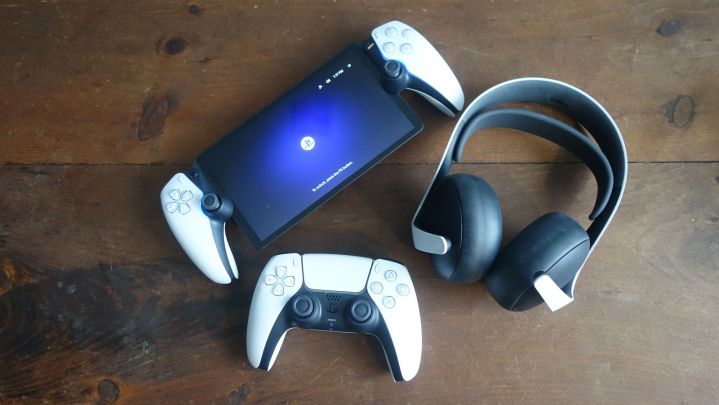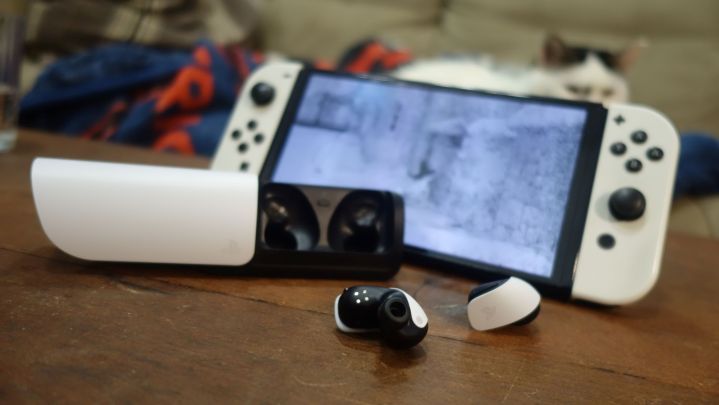
I’ve had a bit of a love-hate relationship with the PlayStation Portal since it launched. Initially, I was disappointed by Sony’s cloud streaming device. I was impressed with its screen and appreciated its DualSense integration, but its slimmeddown features made it feel like a cheap version of a good idea. I’ve since learned to find a use case for my PlayStation Portal that turned it into an integral part of my gaming setup. It’s very imperfect, but that doesn’t mean it’s not useful.
Ever since its launch, I’ve been hoping for a refreshed follow-up, whether that be a Pro model or a true PlayStation Portal 2. It may be way too early to start discussing that considering that the Portal just launched in November 2023, but the promising device has enough glaring flaws that I’d welcome a fast-tracked successor. If Sony were to make a PlayStation Portal 2, though, there’s one feature that’s nonnegotiable: Bluetooth.
If you’re unfamiliar with Sony’s remote playing handheld, you might be a little confused. Surely, a portable gaming consoled released in 2023 has Bluetooth support, right? Weirdly, that’s not the case — and it’s the system’s biggest problem.

Currently, you only have two audio options on the PlayStation Portal. There’s a headphone jack on the back of the system that allows users to hook up wired headsets. You can plug in any earbuds or devices you want. However, wireless audio enthusiasts are out of luck. The handheld doesn’t feature Bluetooth support. At the moment, you simply can’t use most wireless headsets with it, which is a major problem for a gaming handheld.
There’s a reason for that … and it’s a little infuriating. The PlayStation Portal instead uses a new Sony audio tech called PlayStation Link. Sony claims that its proprietary connection technology allows for lower latency and better audio quality, alongside faster connection speeds. That all sounds great on paper, but there’s a big catch: only a few specific devices actually use PlayStation Link tech. If you want to use a wireless headset with your Portal, you essentially need to buy a $150 pair of Pulse Elite cans. And if you want earbuds, you’ll likely need to grab the $200 Pulse Explore.
It’s not that these aren’t solid audio options. I own both of these devices and they’re perfectly solid (though expensive) audio options that easily pair with the Portal. I can’t say that I’ve noticed a difference between PlayStation Link and Bluetooth, though. From a casual perspective, the connection speed, latency, and quality dsn’t feel very different from what I get with the devices I normally use. That’s left me skeptical about PlayStation Link, which feels more like a marketing gimmick that’s forcing players in the PlayStation 5 ecosystem to buy pricey new headsets.

It may sound like a small complaint, but PlayStation Link is currently the Portal’s biggest weak point. A portable gaming device is built around the concept of flexibility. Its power hinges on the idea that you can play PS5 wherever, whenever. To so heavily restrict what audio devices players can bring along with them is to sell the entire idea short. PlayStation Link needs to live alongside Bluetooth, not replace it. If the tech is really as good as Sony says it is, players should naturally want to invest in devices that support it by choice.
Missing Bluetooth support isn’t the only feature I’d want in a PlayStation Portal 2. I’d love for a follow-up to come with its own carrying case or perhaps an upgrade to an OLED screen. But for the moment, those are secondary wishes. The first thing I’ll be looking for is whether or not I can use my favorite wireless headsets with it. If the next PlayStation Portal still won’t let me do that, I can’t imagine I’ll be upgrading anytime soon.
Editors’ Recommendations

